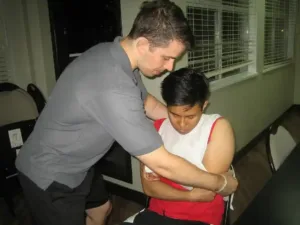San Francisco CPR is a the best provider of the quality CPR Courses in San Francisco, California. With over eight training programs offered all through the week at very affordable rates, our courses are consistently flocked by students. Our courses are not only taken by people in healthcare, even parents and teachers are among our trainees. If you are in need of a training credential in CPR training, just sign up for any of our courses we will be able to give you what you need.
CPR credentials
Credentials are typical requirements when you work in healthcare or have a high risk job. Employers will usually request you to submit CPR training certificates before you start working or even before you apply for work. All of the courses at San Francisco CPR are certification course; we just require students to have complete attendance and pass the certification test before we award them with a credential.
Validity and renewal
Credentials are valid for 2 years before we require student to renew them. They can only be renewed through re-certification classes. Remember to renew your certificate before it expires; we do not accept expired certification for our re-certification classes. Re-certification is offered for three of our courses, one BLS course and both ALS courses.
Correctly giving chest compressions

When the heart stops beating spontaneously, that is a condition called cardiac arrest. Cardiac arrest can happen because of a pre-existing heart condition or a sudden stroke. This is dangerous because a lack of oxygenated flow to the body can cause organ failure, especially in the brain. After roughly seven minutes without oxygen, the brain tissue begins to die – an irreversible process.
Chest compressions manually pump the heart and attempt to restore spontaneous circulation in the body. We teach students that the most important part of CPR training is to give chest compressions timely and correctly. CPR courses teach trainees how to recognize cardiac arrest and when to immediately start CPR.
When you give chest compressions, you have to depress the chest by at least one-third of its AP diameter, which is about 2 inches. Place the heel of your palm on the center of the chest (between the nipples), and press down. Remember to allow the chest to recoil before you give another compression. Compressions and rescue breaths are given in a 30:2 cycle. This cycle is repeated until medical help arrives or until the heart starts beating again.
Our CPR training courses
All of our training courses available through the week. You enrol for any of the eight programs over the San Francisco CPR website or through e-mail or telephone. You may alsosign up for training in person, but be sure to visit our provider during normal business hours.
Basic Life Support
- Heartsaver CPR/AED – 4 hours, general public course; one-person CPR
- Heartsaver CPR/AED – 4.5 hours, healthcare providers; one-person CPR
- Basic Life Support – 4.5 hours, healthcare providers; one and two-person CPR
Advanced Life Support
- Advanced Cardiac Life Support (ACLS) – 16 hours, healthcare providers; management of adult cases
- Pediatric Advanced Life Support (PALS) – 14 hours, healthcare providers; management of pediatric cases